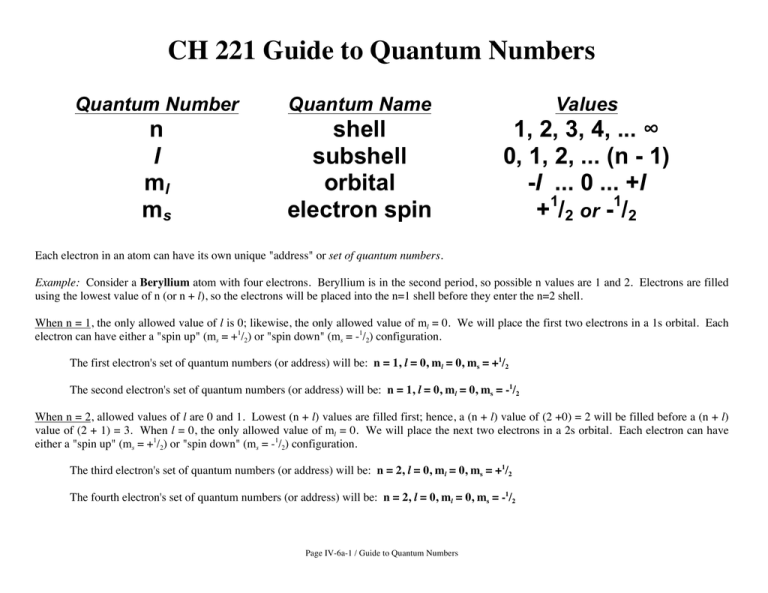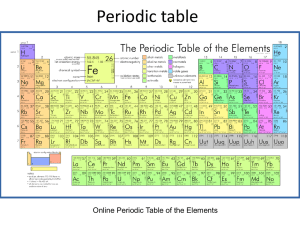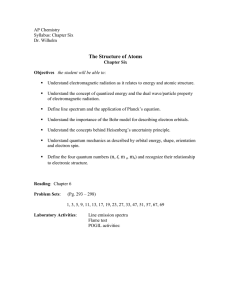Quantum Numbers
advertisement

CH 221 Guide to Quantum Numbers Quantum Number Quantum Name Values n l ml ms shell subshell orbital electron spin 1, 2, 3, 4, ... ∞ 0, 1, 2, ... (n - 1) -l ... 0 ... +l +1/2 or -1/2 Each electron in an atom can have its own unique "address" or set of quantum numbers. Example: Consider a Beryllium atom with four electrons. Beryllium is in the second period, so possible n values are 1 and 2. Electrons are filled using the lowest value of n (or n + l), so the electrons will be placed into the n=1 shell before they enter the n=2 shell. When n = 1, the only allowed value of l is 0; likewise, the only allowed value of ml = 0. We will place the first two electrons in a 1s orbital. Each electron can have either a "spin up" (ms = +1/2) or "spin down" (ms = -1/2) configuration. The first electron's set of quantum numbers (or address) will be: n = 1, l = 0, ml = 0, ms = +1/2 The second electron's set of quantum numbers (or address) will be: n = 1, l = 0, ml = 0, ms = -1/2 When n = 2, allowed values of l are 0 and 1. Lowest (n + l) values are filled first; hence, a (n + l) value of (2 +0) = 2 will be filled before a (n + l) value of (2 + 1) = 3. When l = 0, the only allowed value of ml = 0. We will place the next two electrons in a 2s orbital. Each electron can have either a "spin up" (ms = +1/2) or "spin down" (ms = -1/2) configuration. The third electron's set of quantum numbers (or address) will be: n = 2, l = 0, ml = 0, ms = +1/2 The fourth electron's set of quantum numbers (or address) will be: n = 2, l = 0, ml = 0, ms = -1/2 Page IV-6a-1 / Guide to Quantum Numbers









